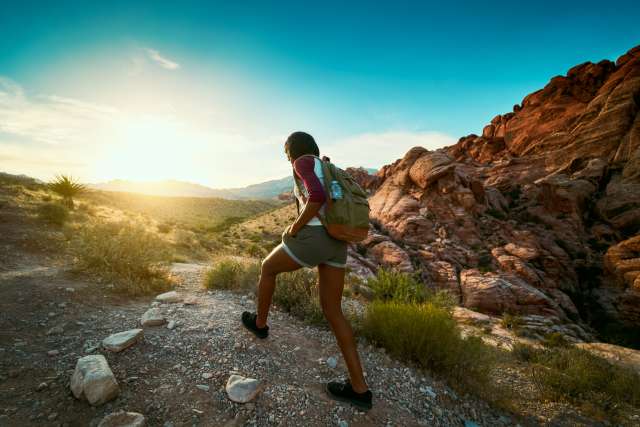Dear Doctors: I keep seeing stories in the news about people who went for a hike and died because of the heat. Apparently some still had water with them. Is it true that you can still get heat stroke even if you’re hydrated? How do you stay safe hiking in hot weather -- just stay home?
Dear Reader: Although staying properly hydrated is crucial to preventing heat-related illness, it is not the only factor in staying safe. A number of other important variables are involved. These include outdoor temperature, humidity, sunlight, activity level, age and general health. Understanding that each of these play a role can be the difference between an enjoyable outing and a tragedy.
Our bodies need a core temperature of between 97 to 99 degrees Fahrenheit for optimal function. If it rises much beyond that range, the enzymes that catalyze virtually every chemical reaction in our bodies begin to suffer damage. The idea behind staying hydrated is to provide the body with enough water to produce as much sweat as needed for evaporative cooling without depleting the supply required for essential metabolic functions.
Another important, and often overlooked, factor in maintaining a safe core temperature in hot weather is someone’s activity level. Our muscles generate heat as we use them. That means when you’re hiking on a hot day, your body is heating up both from the outside and the inside. Radiant energy from the sun also heats the skin. When it’s hot, sunny and you’re exerting yourself, you are getting heat from three separate sources. It’s all too easy to reach a tipping point where the body’s natural cooling systems become overwhelmed. And don’t forget about the role of humidity, which slows or even cancels out the evaporative effect of sweating.
Once it begins, overheating can be a swift cascade from mild discomfort to severe illness. Early symptoms of rising core temperature -- such as flushed skin, excessive sweating, light-headedness, headache and muscle cramps -- are easy to dismiss or ignore. But these are more than just exercise-related discomfort: They are warning signs. Unless immediate steps are taken to cool the body, heat stress can lead to heat exhaustion and swiftly progress to heat stroke, which is a medical emergency.
Staying safe when hiking in hot weather requires tactical planning. Drink water before you even leave the house. Know how long the hike will take, and plan your water supply -- and intake -- accordingly. It is estimated a healthy adult hiking in hot weather needs to drink at least 1 liter of water each hour. It may be counterintuitive, but wearing long sleeves and long pants -- loose, lightweight and in light colors -- keeps you cooler than bare skin, which is exposed to the radiant heat of sunlight. Wear a wide-brimmed hat to protect your head, and consider using a UV-blocking umbrella so you can walk in shade. Leave early, avoid the midday heat and take frequent breaks in whatever shade is available.
The bottom line is that avoiding heat-related illness is much, much easier than recovering from it.
(Send your questions to [email protected], or write: Ask the Doctors, c/o UCLA Health Sciences Media Relations, 10960 Wilshire Blvd., Suite 1955, Los Angeles, CA, 90024. Owing to the volume of mail, personal replies cannot be provided.)





